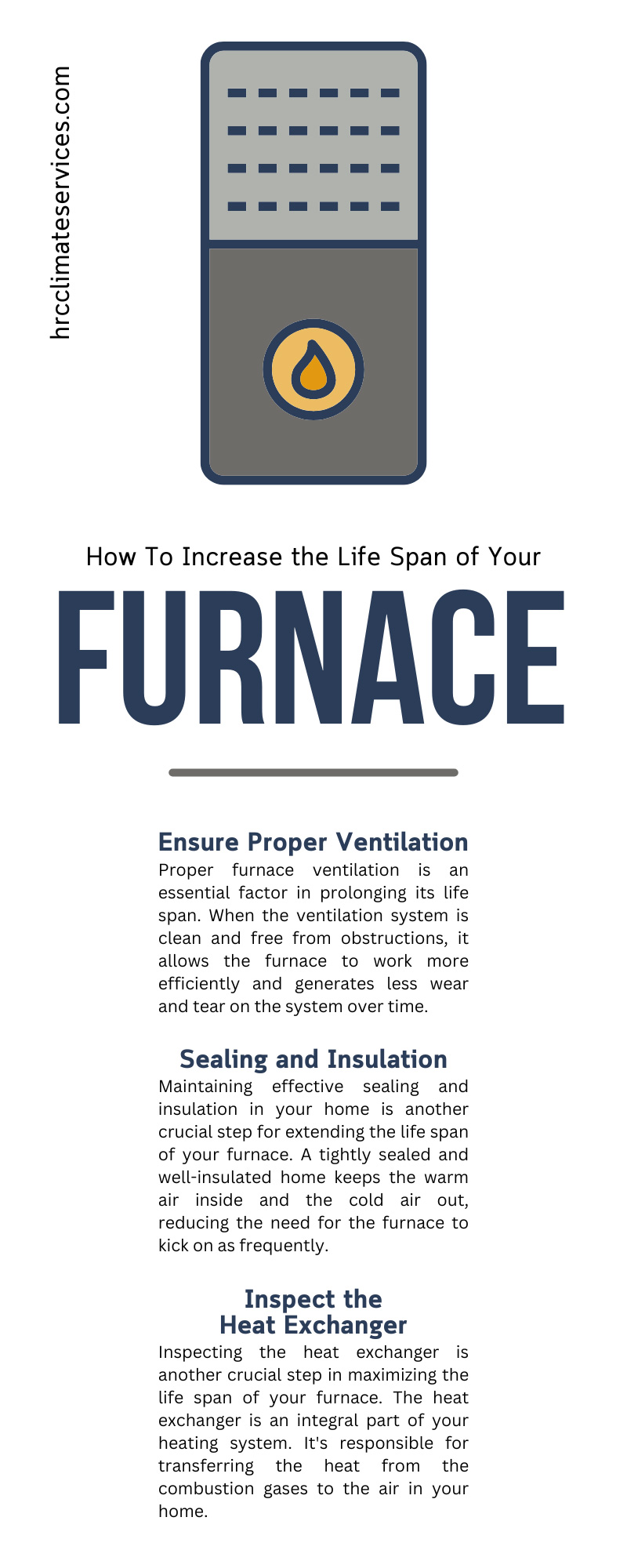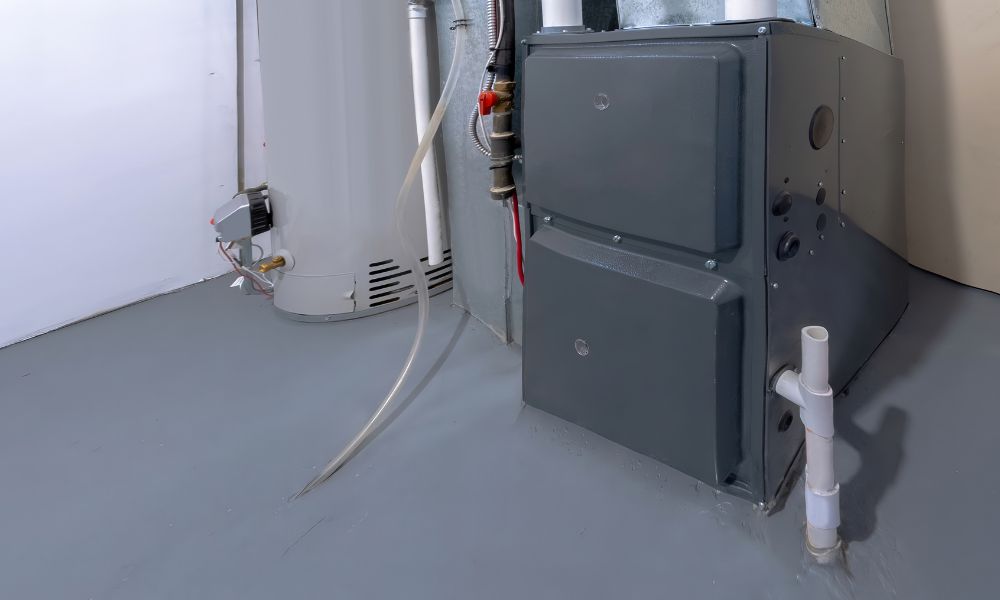There is no worse feeling than when your furnace suddenly stops working in the middle of winter. With colder temperatures outside, you never want to deal with an assortment of issues that leave your home without heat. Luckily, there are ways you can increase the life span of your furnace so you can avoid unexpected and costly breakdowns in the future. Keep your home cozy for many seasons to come with our advice below.
Ensure Proper Ventilation
Proper furnace ventilation is an essential factor in prolonging its life span. When the ventilation system is clean and free from obstructions, it allows the furnace to work more efficiently and generates less wear and tear on the system over time.
If the furnace has to work harder because of a blocked vent, it can overheat and eventually break down, thereby reducing its life span. Ensuring the ventilation system is free from obstructions such as debris or dust can help maintain the efficiency of your furnace and extend its life.
Sealing and Insulation
Maintaining effective sealing and insulation in your home is another crucial step for extending the life span of your furnace. A tightly sealed and well-insulated home keeps the warm air inside and the cold air out, reducing the need for the furnace to kick on as frequently. This reduction in furnace usage subsequently leads to less strain on the system.
Windows, doors, and any other potential leaks should be properly sealed, and using insulation in your home’s walls, attic, and floors can further improve your home’s heat retention. Incorporating these measures will result in a furnace that needs to run less frequently, extending its longevity.
Inspect the Heat Exchanger
Inspecting the heat exchanger is another crucial step in maximizing the life span of your furnace. The heat exchanger is an integral part of your heating system. It’s responsible for transferring the heat from the combustion gases to the air in your home.
Over time, natural wear and tear and extreme heat can lead to cracks in the heat exchanger. This not only decreases the efficiency of your furnace but also poses a dangerous risk of carbon monoxide leaks. Regular inspections of the heat exchanger can catch any potential issues early, allowing for repairs or replacement before a major breakdown occurs. Therefore, periodic checkups of the heat exchanger can help maintain the overall health of your furnace, enhancing its efficiency and longevity.
Replace the Air Filter
Replacing the air filter is a simple yet effective step to extend the life of your furnace. Air filters work to trap and hold all the dust, dirt, and other airborne particles that find their way into your heating system. Over time, these particles accumulate, causing the filter to become clogged. This blockage forces your furnace to work harder to push air through, resulting in an unnecessary strain on the system that can lead to premature wear and tear.
Moreover, a dirty air filter can also compromise air quality. Regularly replacing your air filter—about every 1-3 months, depending on usage—can help maintain the efficiency of your furnace, improve air quality, and significantly extend its life.
Keep the Area Around the Furnace Clear
Keeping the area around the furnace clear is another significant way to increase the life span of your furnace. A cluttered space can lead to restricted airflow, causing the furnace to work harder to distribute heat, which results in additional wear and tear. Furthermore, any flammable materials near the furnace pose a safety risk.
A clean, clear space ensures the furnace has sufficient airflow and reduces the risk of accidental fires. Regularly inspecting the area around your furnace and removing any dust, debris, or flammable items can contribute to the efficiency and longevity of your furnace. A tidy space results in a furnace that performs optimally and endures longer.
Regular Cleaning and Maintenance
Regular cleaning and maintenance of your furnace cannot be overstated in terms of its impact on the system’s life span. Ensuring your furnace is clean decreases the likelihood of system clogging and prevents the accumulation of potentially harmful debris.
Regular maintenance allows for early detection of any issues that could lead to future problems. A well-maintained furnace runs more efficiently, experiences less strain, and lasts longer. Maintenance activities include inspecting and adjusting the burner flame, checking the system controls, lubricating all moving parts, and tightening electrical connections.
Regular Professional Inspections
Regular professional inspections are critical to increasing the life span of your furnace. These inspections allow HVAC professionals to thoroughly examine your furnace, identifying potential issues that may not be immediately visible or noticeable. The professional service includes a comprehensive check-up of all the furnace components, including the heat exchanger, blower, thermostat, and ducts. These experts are trained to spot signs of wear and tear and preempt potential breakdowns.
Regular inspections can help adjust the furnace’s performance, improve efficiency, and prevent minor issues from escalating into costly repairs or replacements. Crucially, a professional inspection includes the calibration of your furnace, ensuring it operates at its peak. Therefore, scheduling a professional furnace inspection at least once a year, preferably before the start of the heating season, can significantly extend the longevity of your furnace.
Upgrade When Necessary
While regular maintenance and care can significantly increase the life span of your furnace, there may come a time when it is more cost effective and efficient to upgrade your furnace. For instance, if your furnace frequently requires repairs or your energy bills are increasingly higher, these are signs that your furnace is not operating efficiently and may need to be replaced. Similarly, if your furnace is over 15 years old, it may not be as efficient as newer models with advanced technology designed to save energy and reduce costs.
In some cases, an outdated furnace may pose safety risks, such as leaks from carbon monoxide. It’s also worth considering an upgrade if your furnace is not providing consistent heat throughout your home, leading to uncomfortable temperature fluctuations. In these instances, investing in a new furnace can offer enhanced comfort, lower energy consumption, and improved overall home efficiency. Consulting with a professional during a furnace inspection can provide insight into whether an upgrade is the best course of action for your specific situation.
Knowing how to increase the life span of your furnace can save you from chilly nights and unexpected repair costs. You can significantly prolong your furnace’s longevity with our tips and advice above. And remember, when it’s time, don’t hesitate to upgrade your furnace to a new, more efficient model. Balancing these responsible maintenance practices with the advice of a professional during a furnace inspection will ensure your furnace remains in optimal working condition, keeping your home cozy for many seasons to come.
If you’re looking for top-quality services with knowledgeable professionals, HRC Climate Services is here to help! We’ll work with you to ensure your home is as comfortable as possible for you and your family.




